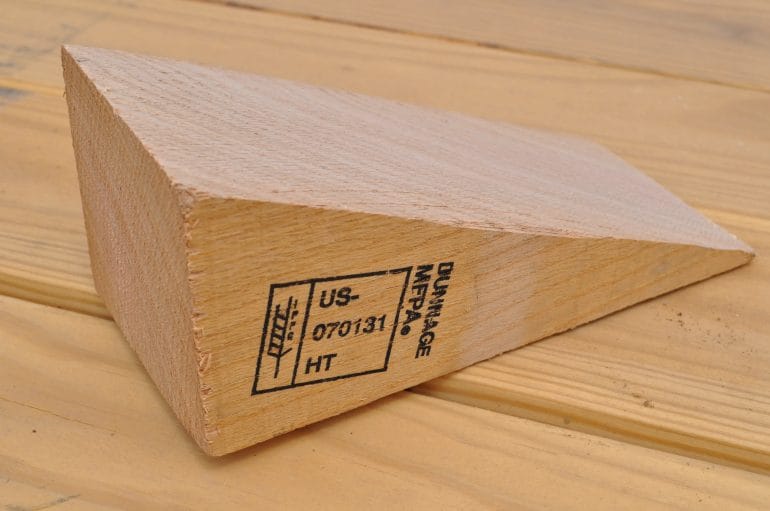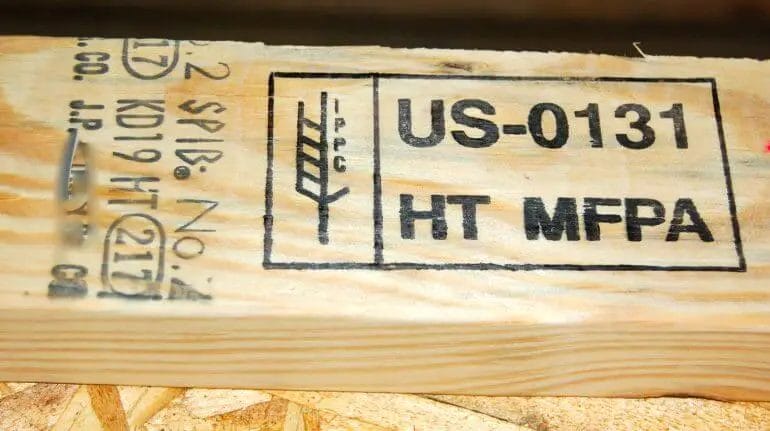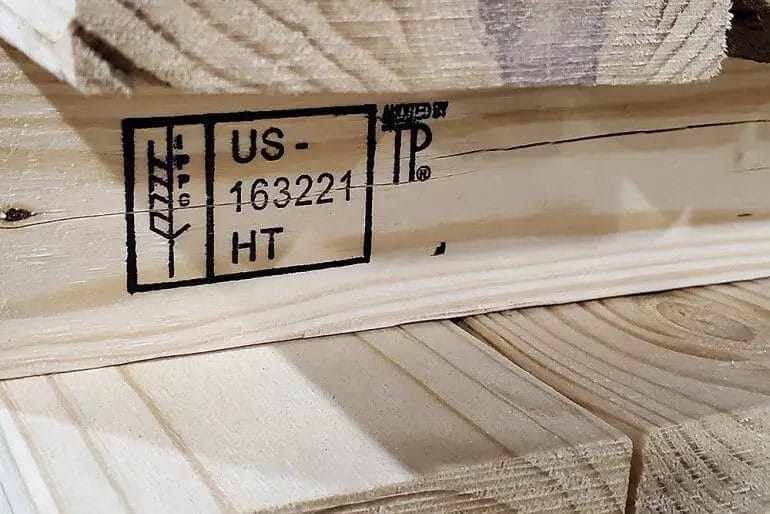Heat-treated wood refers to a type of timber that has undergone a specific thermal treatment process to enhance its durability and stability. This process involves subjecting the wood to high temperatures, typically between 160 to 240 degrees Celsius, in a controlled environment, which alters its chemical and physical properties. Heat-treated wood is more resistant to decay, insects, and moisture, making it an ideal choice for outdoor applications such as decking, fencing, and landscaping.

Heat Treatment Process
Heat treatment is a step-by-step process that involves subjecting wood to carefully controlled temperatures to enhance its properties. This process has gained popularity in recent years due to its numerous benefits, including improved durability, stability, and resistance to decay. In this section, we will explore the step-by-step process of heat treating wood and understand how it enhances its properties.

1. Preconditioning
The first step in the heat treatment process is preconditioning. Before subjecting the wood to high temperatures, it is important to remove any moisture present in the wood. This is done by placing the wood in a drying kiln, where it is slowly heated to a specific temperature. The moisture content of the wood is gradually reduced, ensuring that the heat treatment process is effective.
2. Heating
Once the wood has been preconditioned, it is ready for the heating stage. The wood is placed in a heat chamber or oven, and the temperature is gradually increased to the desired level. This temperature can vary depending on the type of wood and the desired outcome. The heating process usually takes several hours to ensure that the heat penetrates the wood’s core.
3. Heat Soaking
After reaching the desired temperature, the wood is kept at that temperature for a period of time. This allows the heat to evenly distribute throughout the wood, resulting in a more uniform heat treatment. The duration of the heat soaking process can vary depending on the type of wood and the desired outcome. This step is crucial to ensure that the wood is thoroughly heated and treated.
4. Cooling
Once the heat soaking process is complete, the wood is slowly cooled down to room temperature. This gradual cooling is important to prevent the wood from undergoing excessive stress and potential cracking or warping. The cooling process can take several hours to ensure that the wood cools down evenly, maintaining its structural integrity.
5. Post-Treatment Conditioning
After the wood has been cooled, it undergoes post-treatment conditioning. This involves removing any residual moisture that may have accumulated during the heat treatment process. The wood is carefully monitored and dried to the desired moisture content, ensuring its stability and dimensional accuracy.
6. Finishing
Once the wood has undergone the heat treatment process and has been properly conditioned, it is ready for finishing. The finishing process may involve sanding, sealing, or applying a protective coating to enhance the wood’s appearance and longevity.
In summary, the heat treatment process is a step-by-step method of enhancing wood’s properties through controlled heating and conditioning. This process improves the wood’s durability, stability, and resistance to decay, making it an attractive choice for various applications. Understanding the intricacies of the heat treatment process allows us to appreciate the value it adds to wood products.

Applications of Heat Treated Wood
Heat treated wood has gained popularity in various industries due to its enhanced properties and durability. This type of wood is subjected to a high-temperature treatment process that alters its physical and chemical characteristics, making it suitable for a wide range of applications. In this section, we will explore the diverse uses of heat treated wood in construction, furniture, and outdoor projects.
1. Construction
Heat treated wood offers significant advantages in the construction industry. Its improved dimensional stability and resistance to moisture absorption make it an ideal choice for various structural applications. The heat treatment process reduces the wood’s tendency to shrink, warp, or twist, ensuring that it maintains its shape and integrity over time.
One common application of heat treated wood in construction is for decking and outdoor structures. The enhanced durability of heat treated wood allows it to withstand exposure to harsh weather conditions, making it a long-lasting option for outdoor projects. It is also resistant to decay, rot, and insect infestation, making it a practical choice for areas with high humidity or insect activity.
Additionally, heat treated wood can be used for interior applications such as flooring, wall paneling, and beams. Its attractive appearance, combined with its durability, makes it a popular choice for creating a rustic or natural aesthetic in residential and commercial spaces.
2. Furniture
The unique properties of heat treated wood make it a versatile material for furniture manufacturing. Its resistance to moisture and dimensional stability make it an excellent choice for outdoor furniture, including patio sets, benches, and picnic tables. Heat treated wood furniture can withstand exposure to rain, sun, and temperature variations without warping or deteriorating.
Heat treated wood also offers advantages in the production of indoor furniture. Its resistance to pests and decay makes it ideal for creating durable and long-lasting pieces. The heat treatment process also enhances the wood’s strength, allowing it to withstand heavy loads and regular use.
Furthermore, heat treated wood’s distinctive appearance, with its natural weathered or caramelized color tones, adds a unique charm to furniture pieces. It can be used to create both modern and rustic designs, appealing to a wide range of aesthetic preferences.
3. Outdoor Projects
Heat treated wood is widely used in various outdoor projects due to its durability and resistance to environmental factors. It is commonly employed in the construction of fences, pergolas, sheds, and retaining walls. These structures require materials that can withstand constant exposure to the elements, and heat treated wood offers the necessary longevity and resistance.
In landscaping projects, heat treated wood can be used to create raised beds, garden borders, and walkways. Its resistance to rot and decay makes it a safe and environmentally friendly option for these applications.
Moreover, heat treated wood is suitable for the fabrication of playground equipment, such as swing sets and playhouses. Its strong and durable nature ensures the safety and longevity of these structures, providing children with a secure and enjoyable play area.
Heat treated wood has proven to be a valuable material in various industries, enabling the construction of durable structures, the production of long-lasting furniture, and the realization of outdoor projects. Its enhanced properties, including dimensional stability, resistance to moisture and pests, and attractive appearance, make it an excellent choice for a wide range of applications. Whether used in construction, furniture, or outdoor projects, heat treated wood offers durability, longevity, and aesthetic appeal.

Comparing Heat Treated Wood with Traditional Wood
Wood is a versatile and widely used material in various applications, from construction to furniture making. To enhance its durability and resistance to rot and decay, wood can be treated through different methods. One such method is heat treatment, which involves subjecting wood to high temperatures in a controlled environment. In this section, we will delve into the differences between heat treated wood and traditional wood, exploring the advantages and disadvantages of each.
1. Heat Treated Wood
Heat treated wood, also known as thermally modified wood, undergoes a process where it is heated to temperatures between 160°C and 220°C in the absence of oxygen. This treatment alters the wood’s structure, resulting in several beneficial characteristics.
Advantages of heat treated wood:
- Improved dimensional stability: Heat treatment reduces the wood’s ability to absorb and release moisture, resulting in reduced shrinkage, swelling, and warping when exposed to changes in humidity.
- Enhanced durability: The heat treatment process minimizes the risk of fungal decay, insect infestation, and rot, making the wood more resistant to environmental factors.
- Increased resistance to moisture: Heat treated wood has a lower equilibrium moisture content compared to traditional wood, reducing the risk of mold growth and moisture-related issues.
- Improved thermal insulation: Heat treated wood has better thermal insulation properties, offering better energy efficiency compared to traditional wood.
- Reduced maintenance requirements: Heat treated wood requires less maintenance over its lifespan, as it is less prone to rot, decay, and insect damage.
Despite its numerous advantages, heat treated wood also has some limitations:
- High cost: The process of heat treatment adds to the overall cost of the wood, making it relatively more expensive than traditional wood.
- Reduced strength: Heat treatment may cause a slight reduction in the wood’s mechanical strength, which can impact its load-bearing capabilities.
- Limited availability: Heat treated wood may not be as readily available as traditional wood, depending on the region and market demand.
2. Traditional Wood
Traditional wood refers to untreated or minimally treated wood that is commonly used in various applications.
Advantages of traditional wood:
- Lower cost: Traditional wood is generally more cost-effective compared to heat treated wood, making it a preferred choice for budget-conscious projects.
- High strength: Untreated wood retains its natural strength, which makes it suitable for load-bearing applications.
- Widely available: Traditional wood is readily available in various species and sizes, making it easily accessible for construction and woodworking projects.
However, traditional wood also has its disadvantages:
- Greater susceptibility to decay: Untreated wood is more prone to fungal decay, rot, and insect infestation, especially when exposed to moisture and outdoor elements.
- Dimensional instability: Traditional wood is more susceptible to changes in moisture content, leading to shrinkage, swelling, and warping.
- Higher maintenance requirements: Untreated wood requires regular maintenance, including staining, sealing, and protection against rot and insects.
In summary, heat treated wood offers several advantages over traditional wood, including improved dimensional stability, enhanced durability, and reduced maintenance requirements. However, it comes at a higher cost and may have slightly reduced mechanical strength. Meanwhile, traditional wood is more cost-effective and readily available, but it requires regular maintenance and is more susceptible to decay and dimensional instability. Choosing the right type of wood depends on the specific project requirements, budget, and desired lifespan of the wood.
Sustainable and Eco-Friendly Aspects of Heat Treated Wood
Heat treated wood, also known as thermally modified wood, has gained significant recognition in recent years for its sustainable and eco-friendly qualities. This process involves subjecting wood to high temperatures, typically between 180 to 230 degrees Celsius, in the absence of oxygen. The result is a product that exhibits enhanced durability, increased dimensional stability, and reduced susceptibility to moisture and pest damage.
When it comes to sustainability, heat treated wood offers several benefits. Firstly, it is an environmentally friendly alternative to chemically treated wood. Traditional wood treatment methods often rely on toxic chemicals like creosote or chromated copper arsenate (CCA), which can leach into the soil and water, posing potential health risks to both humans and wildlife. Heat treatment, on the other hand, does not involve the use of any chemicals, making it a safer and greener option.
Furthermore, the heat treatment process utilizes wood from sustainable and renewable sources. This means that the wood used for heat treatment is typically harvested from responsibly managed forests, where tree replanting programs are in place to ensure the long-term viability of the ecosystem. By choosing heat treated wood products, consumers can support sustainable forestry practices and contribute to the preservation of our natural resources.
In addition to its sustainability credentials, heat treated wood also offers several eco-friendly advantages. One notable advantage is its reduced carbon footprint. The heat treatment process requires less energy compared to other wood modification techniques, such as chemical treatment or kiln drying. As a result, it emits fewer greenhouse gases and contributes less to climate change. This makes heat treated wood a more environmentally friendly option for construction projects and other wood applications.
Heat treated wood is also highly durable, which contributes to its eco-friendliness. The treatment process alters the wood’s cell structure, making it more resistant to decay, rot, and insect infestations. This increased durability translates to a longer lifespan for heat treated wood products, reducing the need for frequent replacements and minimizing waste. By using heat treated wood, builders and homeowners can contribute to a more sustainable and circular economy.
Moreover, heat treated wood exhibits enhanced dimensional stability. It experiences minimal shrinkage or swelling due to changes in moisture content, making it an ideal choice for outdoor applications or areas with high humidity levels. This stability reduces the likelihood of warping, cracking, or other forms of deterioration, leading to longer-lasting structures and less material waste over time.
The Role of Heat Treated Wood in Sustainable Construction
The sustainable and eco-friendly aspects of heat treated wood make it a valuable material in sustainable construction practices. With its enhanced durability and dimensional stability, heat treated wood can be used in various applications, including exterior cladding, decking, siding, and outdoor furniture.
By opting for heat treated wood products, architects and builders can contribute to green building certifications, such as LEED (Leadership in Energy and Environmental Design). Heat treated wood’s reduced carbon footprint and environmental compatibility align with the goals of these certifications, which prioritize sustainability and energy efficiency.
Furthermore, the use of heat treated wood promotes the preservation of natural forests and the responsible management of forest resources. The demand for heat treated wood supports the growth of sustainable forestry practices, which play a crucial role in sequestering carbon dioxide and maintaining biodiversity.
In summary, heat treated wood offers numerous sustainable and eco-friendly benefits. From its chemical-free treatment process to its reduced carbon footprint and enhanced durability, heat treated wood is a viable and environmentally responsible choice for various wood applications. By opting for heat treated wood, consumers can support sustainable practices in the wood industry and contribute to a greener future.
FAQs
What is heat treated wood?
Heat treated wood, also known as thermally modified wood, is a type of wood that has been treated with heat to improve its durability, stability, and resistance to decay. During the heat treatment process, the wood is heated to high temperatures in the absence of oxygen, which alters its chemical and physical properties.
Conclusion
In conclusion, heat-treated wood offers several benefits that make it an attractive option for various applications. Its enhanced durability and resistance to decay and insects make it ideal for outdoor use, such as in decking and landscaping projects. Moreover, heat treatment improves the dimensional stability of the wood, reducing the likelihood of warping, cracking, or splitting. Additionally, heat-treated wood is an environmentally friendly choice, as it eliminates the need for chemical treatment methods. With its unique properties and eco-friendliness, heat-treated wood provides a sustainable and long-lasting solution for your construction and design needs.